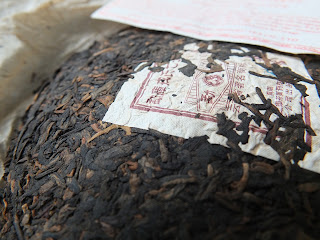From Agence France Presse 30 Aug 2012, this well written article is written by Beh Lih Yi. Titled "Work, mahjong and tea : Hong Kong's secret to longevity".
HONG KONG - Covered in smog and cramped apartment towers, Hong Kong is not usually associated with a healthy lifestyle. But new figures show that Hong Kongers are the longest-living people in the world.
Hong Kong men have held the title for more than a decade and recent data show women in the southern Chinese city overtaking their Japanese counterparts for the first time, according to the governments in Tokyo and Hong Kong.
Hong Kong women's life expectancy rose from an average 86 years in 2010 to 86.7 years in 2011, while Japanese women's longevity was hit by last year's earthquake and tsunami, falling to 85.9 years, census
figures reveal.
So what is Hong Kong's secret to a long life?
Experts say there is no single elixir, but contributing factors include easy access to modern health care, keeping busy, traditional Cantonese cuisine and even the centuries-old Chinese tile game of mahjong.
Rolling stones gather no moss
"I love traveling, I like to see new things and I meet my friends for 'yum cha' every day," Mak Yin, an 80-year-old grandmother of six says as she practices the slow-motion martial art of tai chi in a park on a Sunday morning.
"Yum cha" is the Cantonese term to describe the tradition of drinking tea with bite-sized delicacies known as dim sum. The tea is free and served non-stop, delivering a healthy dose of antioxidants with the meal.
"My friends are in their 60s—they think I'm around their age too, although I'm much older than them," Mak laughs.
Mak's favorite food is steamed vegetables, rice and fruit. Cantonese food is famous for steamed fish and vegetables—dishes that use little or none of the cooking oils blamed for heart disease, obesity and high cholesterol. But before Mak enjoys her afternoon tea, she joins a group of elderly people for her morning exercise of tai chi, an ancient Chinese practice said to have benefits including improving balance and boosting cardiovascular strength.
A study published in the New England Journal of Medicine in February found that tai chi reduces falls and "appears to reduce balance impairments" in people with mild-to-moderate Parkinson's disease.
Another factor behind Hong Kongers' longevity, experts say, is work. While others long for the day they can retire and kick up their heels, many people in Hong Kong work well into their 70s and even 80s.
Hong Kong does not have a statutory retirement age and it is common to see elderly people working in shops, markets and restaurants alongside younger staff.
"Many old people in our city remain working, that contributes to better psychological and mental health," Hong Kong Association of Gerontology president Edward Leung says.
"For older people, a lot of them are stressed because they have nothing to do and they develop 'emptiness syndrome'. This causes mental stress."
Fishmonger Lee Woo-hing, 67, says he could not bear to sit at home and do nothing. His inspiration is local tycoon Li Ka-shing, Asia's richest man, who still runs his vast business empire in his 80s.
"If Li Ka-shing continues working at the age of 84, why should I retire?" asks the father-of-four during a break from his 14-hour shift at a bustling market in central Hong Kong.
"If I just sit at home and stare at the walls, I'm worried that my brain will degenerate faster. I'm happy to chat with different people here in the market."
'Mahjong delays dementia'
Hong Kong's cramped living conditions are famously unhealthy, fueling outbreaks of disease and viruses including bird flu and severe acute respiratory syndrome (SARS) which have killed dozens of people.
The city's reputation won it the dubious distinction of a starring role in director Steven Soderbergh's 2011 disaster thriller "Contagion", about a deadly virus that spreads from Hong Kong to the United States.
But in the day-to-day habits of ordinary people, experts say Hong Kong is a great place to grow old.
A popular local way of keeping busy and meeting friends is mahjong—a mentally stimulating tile game which can help delay dementia, according to aging expert Alfred Chan, of Hong Kong's Lingnan University.
"It stimulates the parts that control memory and cognitive abilities. It helps old people with their retention of memory," he says.
The complex rules and calculation of scores make mahjong, also known as the Chinese version of dominoes, mentally demanding. But the social aspects of the four-player game are just as important.
"In mahjong you need to play with three other people. It is a very good social activity, you have to interact with each other constantly," says Chan, who has studied the game's effects on the well being of elderly people.
"It is also a self-fulfilling game because if you win—whether you play with money or not—it gives you a sense of empowerment."
Mahjong parlors are popular in Hong Kong, and mahjong tables are a must at Chinese wedding banquets.
"I'm in semi-retirement. I work in the morning and hang out with my friends by playing mahjong in the afternoon," says 67-year-old tailor Yeung Fook, on the sidelines of a game in his modest garment shop.
"I'm happier when I work. It's boring to just sit at home."








































